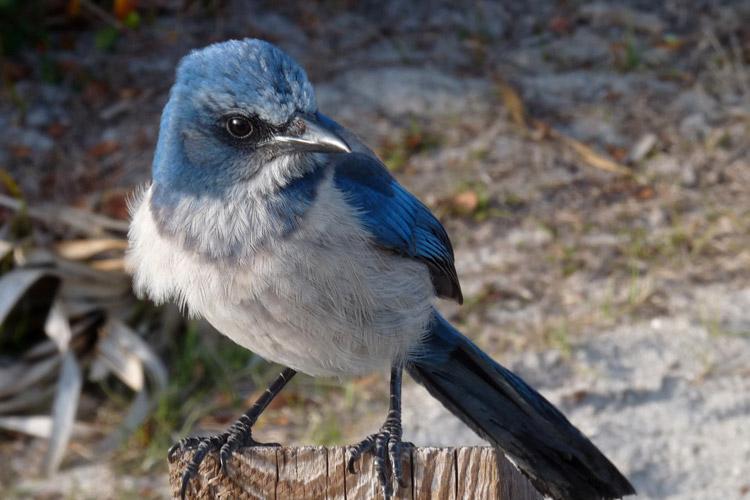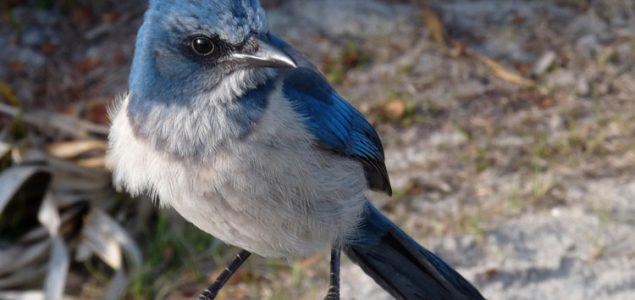When Meta was small we spent time at a friend’s house on the Chesapeake Bay. Living on the water was a new experience but like most children, the ultimate observers, Meta soon pinned things down. She divided the year into “osprey season,” (in summer, they sat on mile markers in the Bay) and “grapefruit season,” (in December, they arrived in local supermarkets.)
Here in south Florida, ospreys are with us all year, so for me, a bird for spring/summer is a toss up between the chuck-will’s-widow, scissor-tailed kite and the bobwhite.
After a long cold winter—which is increasingly rare around here—the first call of the bobwhite elicits a kind of feral joy. What I love so much about this bird is that he says his name so clearly and in the same vernacular, whether it be in south Florida or northern Maine. But the scissor-tails also steal my heart when they circle high in the sky, taking it all in. The chuck-will’s-widow, a large nightjar, is so loud, so distinctive it, too, begs attention. Each evening, the male puts on aerial demonstrations to impress the females, then lands to sound his familiar call throughout much of the night.
Winter is a no contest. Yes, grapefruit is in season in December in Florida, but winter is also “eagle season.” (The Oscar Scherer State Park eagles are chattering away as I write this.) Each year, I am fortunate to see the new crop grow up, fledge and practice living in the world. The flighty behavior of the young preparing to disperse is impressively raucous.
Comings and goings are scattered throughout my avian year, some at opposite times from what I experienced up north. Robins, which arrive en masse in fall, remind me of summer evenings in my Annapolis garden. Clouds of tree swallows are also a wintertime phenomenon. The eagles fly north in mid-May, often leaving a juvenile to fend for himself. He’ll ride out storms in the now empty nest, voicing his displeasure at wind, rain and lightning strikes.
Returning hummingbirds nectaring on native plants are an especially welcome sight in spring. On rare occasions, a ruby-throat flies by in search of a native plant like coral honeysuckle to satisfy a rapacious appetite after its long migration across the Gulf of Mexico.
Migration has mystified and enthralled mankind forever. Early on, people theorized that birds, like bears and groundhogs, existed in a kind of torpor in winter.
In summer, the place empties out. On a day in July in southwest Florida, the beach can be deserted except for an ibis or two, one snowy egret and a couple of brown pelicans, all permanent residents. Sandpipers and ruddy turnstones have migrated to the Arctic to nest. Royal and sandwich terns have departed for Egmont and other keys along the coast north of me, where they congregate in large colonies to nest.
Then, in early fall, families of terns are back on the beach. Bigger than their parents, the “babies” demand to be fed. Once again, sandpipers scurry back and forth, chasing the waves. As the water recedes, they probe the sand for crustaceans, their main food. These tiny creatures which weigh just a couple of ounces have returned from nesting sites in the Canadian Arctic or in Greenland, requiring a migration of thousands of miles.
Bird time can even be experienced on a daily schedule. The eagles awake early, as do mourning doves whose soft cooing is a welcome counterpoint to the raucous chattering of the eagles. Throughout the day, cardinals “chime” the hours, though not with the precision of the church clock near my house in Nokomis. And their calls differ over the course of a day. They can start out “tweet tweet tweet” in the early morning, then change over to “sweetie sweetie sweetie” and any number of variations on that theme. Starting in mid-morning, woodpeckers—pileated are the loudest of the group–make themselves known.
Throughout the day, I see and hear blue jays, Northern parulas, white-eyed virios, and in winter, catbirds and warblers. All year round, crows and vultures ride the thermals. Flyovers by ibis, egrets, sandhill cranes are mainly in early morning and late afternoon. Most reliable are a troupe of whistling ducks which a half hour after sundown, pass by on their way to roost for the night. Cardinals are the last to roost. In spring, the chuck-will’s- widow makes his dramatic entrance around eight in the evening, later as the days grow longer. In late fall, the hooting of great horned owls penetrates my dreams. It’s courting season for them and the little eastern screech owl.
All this wildlife exists in my small window into Oscar Scherer State Park. Translate that into 1400 acres and we have a miracle in this increasing urbanized landscape, where natural lands are eaten up by relentless development.
One early spring afternoon, I was talking with Anita Mitchell, a snowbird neighbor who told me that she had just heard from her son on Cape Cod that the ospreys had returned to Barnstable. It made me think they must be back on Chesapeake Bay riding out the anticipated spring snowstorm.
Now the sun has set and I’m awaiting the call of the chuck-will’s-widow. There it is, right in front of me. In the darkness, I search the grasses for this plain brown bird.
Birds enrich our lives. Their numbers are dwindling. How impoverished we would be living in a “silent spring”.

